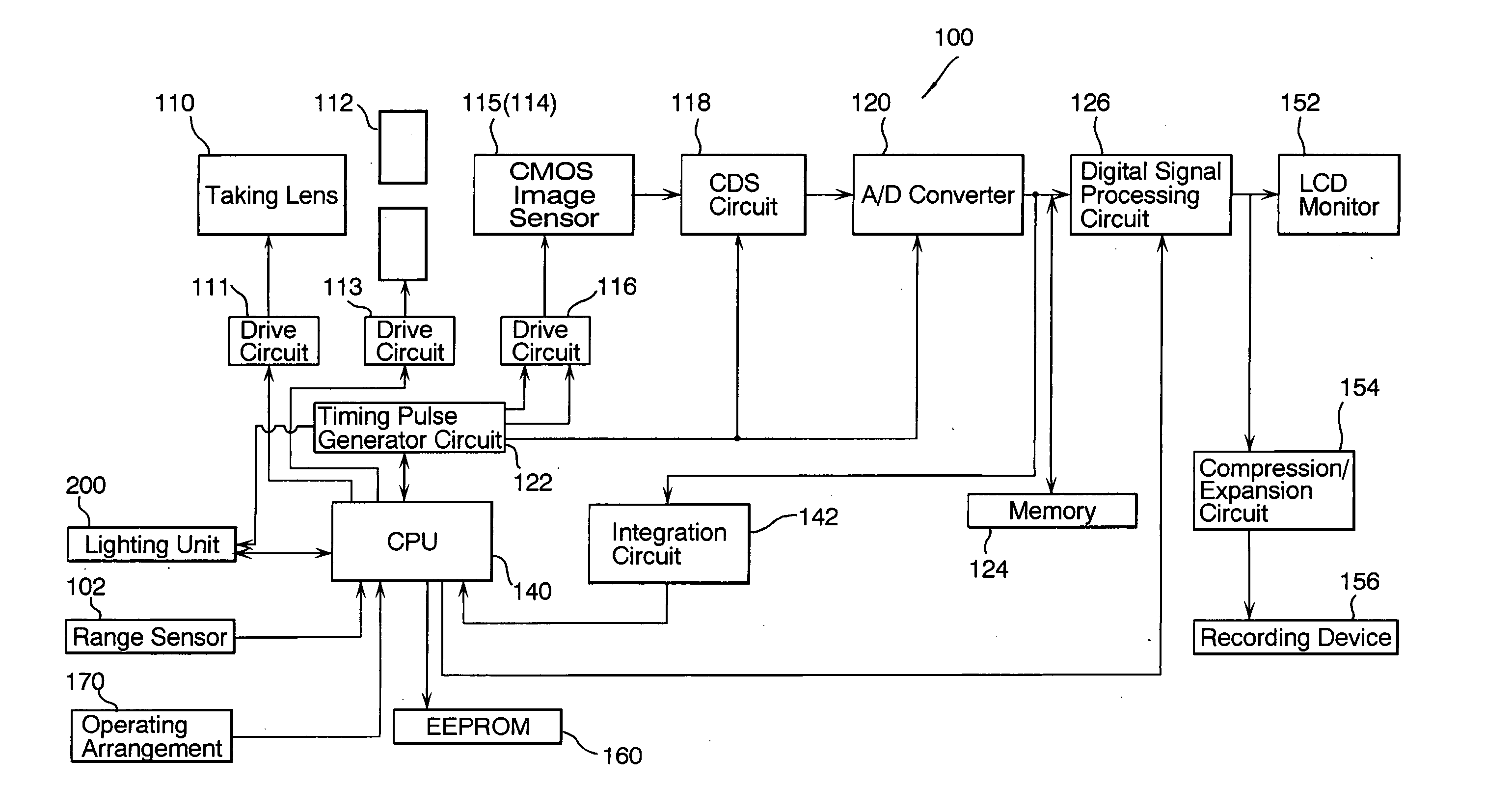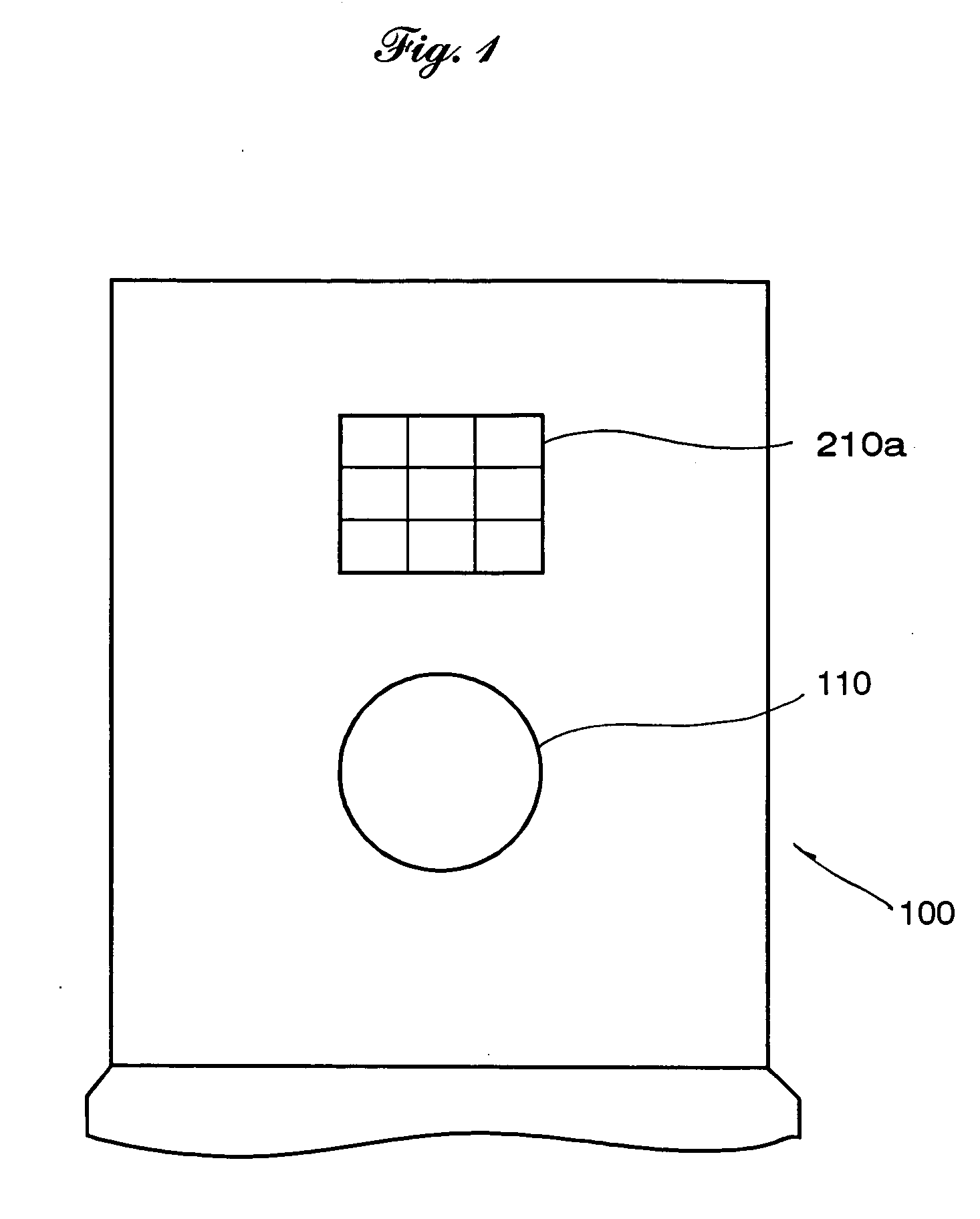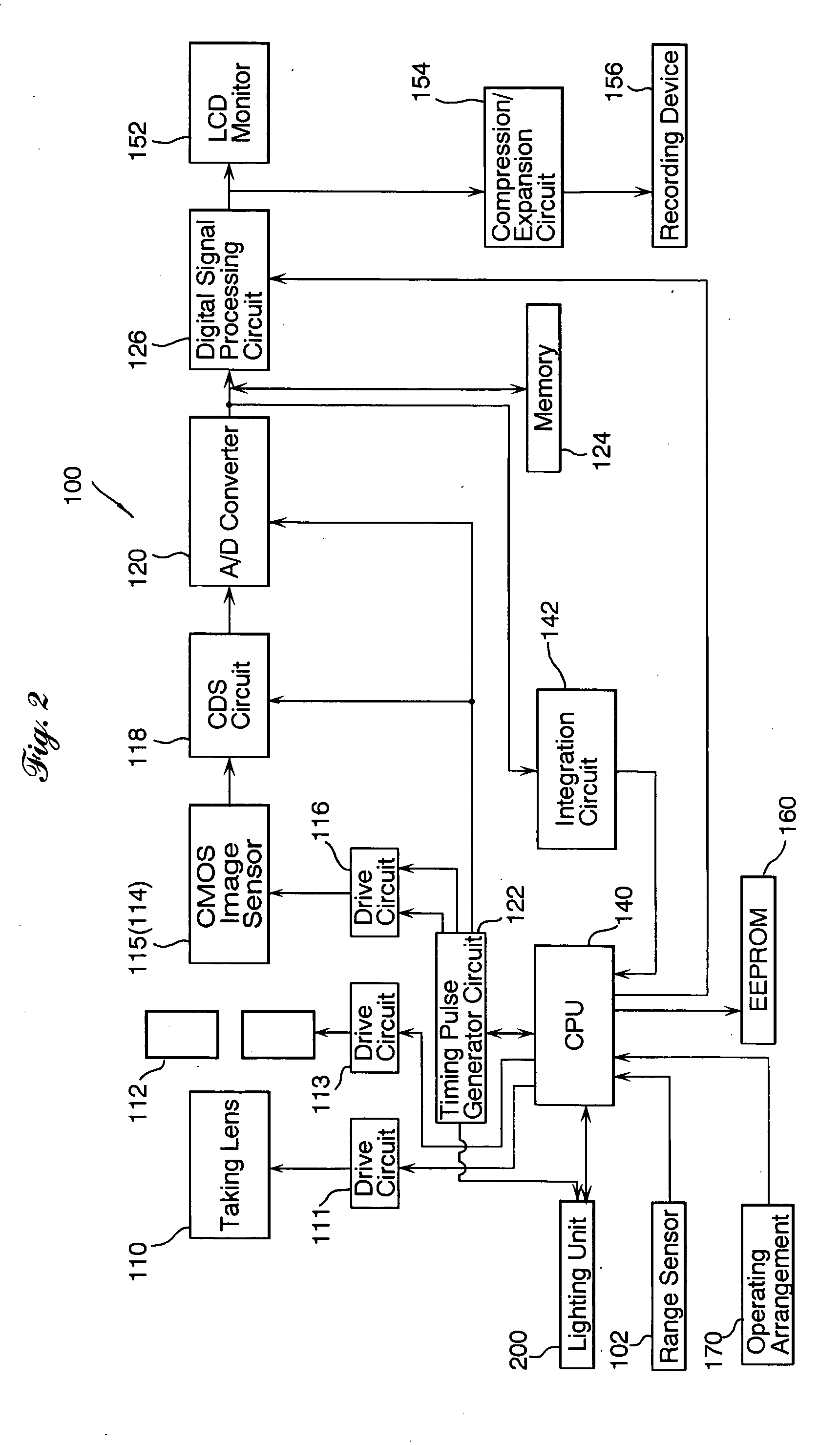Electronic imaging system
a technology of electronic imaging and image sensor array, which is applied in the field of imaging system, can solve the problems of inability to achieve the correct exposure of a dark scene, the radiation intensity of light the single white led element is too low to achieve the effect of correct exposure, and the effect of high electric power saving efficiency
- Summary
- Abstract
- Description
- Claims
- Application Information
AI Technical Summary
Benefits of technology
Problems solved by technology
Method used
Image
Examples
Embodiment Construction
[0026] Referring to the accompanying drawings in detail, and in particular, to FIG. 1 schematically showing an electronic imaging system 100, such as a digital still camera, according to an embodiment of the present invention, the imaging system 100 includes a taking lens 110, specifically a zoom lens in this embodiment, and a lighting unit 200 comprising an array of light emitting diodes (which is hereinafter referred to as an LED array) 210a for producing subsidiary flashes which is installed at a side that faces an aimed subject in a scene to be captured. The LED array 210a comprises a number of white LED elements arranged in a plurality of roes. These white LED elements have lighting axes different from one another so as to produce flashes toward different areas of a scene covered by a field of view of the zoom lens 110, respectively. All of the incident light falling on the scene which includes available light indoor illumination light, other ambient light and flashes from the ...
PUM
 Login to View More
Login to View More Abstract
Description
Claims
Application Information
 Login to View More
Login to View More - R&D
- Intellectual Property
- Life Sciences
- Materials
- Tech Scout
- Unparalleled Data Quality
- Higher Quality Content
- 60% Fewer Hallucinations
Browse by: Latest US Patents, China's latest patents, Technical Efficacy Thesaurus, Application Domain, Technology Topic, Popular Technical Reports.
© 2025 PatSnap. All rights reserved.Legal|Privacy policy|Modern Slavery Act Transparency Statement|Sitemap|About US| Contact US: help@patsnap.com



